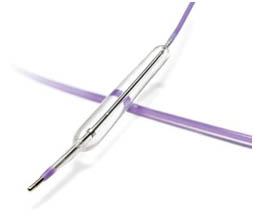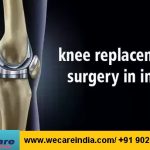PERIPHERAL VASCULAR SURGERY IN INDIA
 A peripheral vascular bypass, also called a lower extremity bypass, is the surgical rerouting of blood flow around an obstructed artery that supplies blood to the legs and feet. This surgery is performed when the buildup of fatty deposits (plaque) in an artery has blocked the normal flow of blood that carries oxygen and nutrients to the lower extremities. Bypass surgery reroutes blood from above the obstructed portion of an artery to another vessel below the obstruction.
A peripheral vascular bypass, also called a lower extremity bypass, is the surgical rerouting of blood flow around an obstructed artery that supplies blood to the legs and feet. This surgery is performed when the buildup of fatty deposits (plaque) in an artery has blocked the normal flow of blood that carries oxygen and nutrients to the lower extremities. Bypass surgery reroutes blood from above the obstructed portion of an artery to another vessel below the obstruction.
A bypass surgery is named for the artery that will be bypassed and the arteries that will receive the rerouted blood.
The three common peripheral vascular bypass surgeries are : –
- Aortobifemoral bypass surgery : – which reroutes blood from the abdominal aorta to the two femoral arteries in the groin.
- Femoropopliteal bypass (fem-pop bypass) surgery : – which reroutes blood from the femoral artery to the popliteal arteries above or below the knee.
- Femorotibial bypass surgery : – which reroutes blood between the femoral artery and the tibial artery.
A substitute vessel or graft must be used in bypass surgeries to reroute the blood. The graft may be a healthy segment of the patient’s own saphenous vein (autogenous graft), a vein that runs the entire length of the thigh. A synthetic graft may be used if the patient’s saphenous vein is not healthy or long enough, or if the vessel to be bypassed is a larger artery that cannot be replaced by a smaller vein.
Diagnosis/Preparation Surgery in India
Diagnosis Surgery in India
After obtaining a detailed history and reviewing symptoms, the physician examines the legs and feet, and orders appropriate tests or procedures to evaluate the vascular system.
Diagnostic tests and procedures may include : –
- Blood pressure and pulses : – pressure measurements are taken in the arms and legs. Pulses are measured in the arms, armpits, wrists, groin, ankles, and behind the knees to determine where blockages may exist, since no pulse is usually felt below a blockage.
- Doppler ultrasonography : – direct measurement of blood flow and rates of flow, sometimes performed in conjunction with stress testing (tests that incorporate an exercise component).
- Angiography : – an x ray procedure that provides clear images of the affected arteries before surgery is performed.
- Blood tests : – routine tests such as cholesterol and glucose, as well as tests to help identify other causes of narrowed arteries, such as inflammation, thoracic outlet syndrome, high homocycteine levels, or arteritis.
- Spiral computed tomography (CT angiography) or magnetic resonance angiography (MRA) : – less invasive forms of angiography.
Preparation Surgery in India
 If not done earlier in the diagnostic process, ultrasonography or angiography procedures
If not done earlier in the diagnostic process, ultrasonography or angiography procedures
may beperformed when the patient is admitted to the hospital. These tests help the physician evaluate the amount of plaque and exact location of the narrowing or obstruction. Any underlying medical condition, such as high blood pressure, heart disease, or diabetes is treated prior to bypass surgery to help obtain the best surgical result. Regular medications, such as blood pressure drugs or diuretics, may be discontinued in some patients. Routine pre-operative blood and urine tests are performed when the patient is admitted to the hospital.
Risks
The risks associated with peripheral vascular bypass surgery are related to the progressive atherosclerosis that led to arterial occlusion, including a return of pre-operative symptoms. In patients with advanced PAD, heart attack or heart failure may occur. Build up of plaque has also taken place in the patient’s arteries of the heart. Restenosis, the continuing build up of plaque, can occur within months to years after surgery if risk factors are not controlled.
Other complications may include : –
- clot formation in a saphenous vein graft
- failed grafts or blockages in grafts
- reactions to anesthesia
- breathing difficulties
- embolism (clot from the surgical site traveling to vessels in the heart, lungs, or brain)
- changes in blood pressure
- infection of the surgical wound
- nerve injury (including sexual function impairment after aortobifemoral bypass)
- post-operative bleeding
- failure to heal properly





